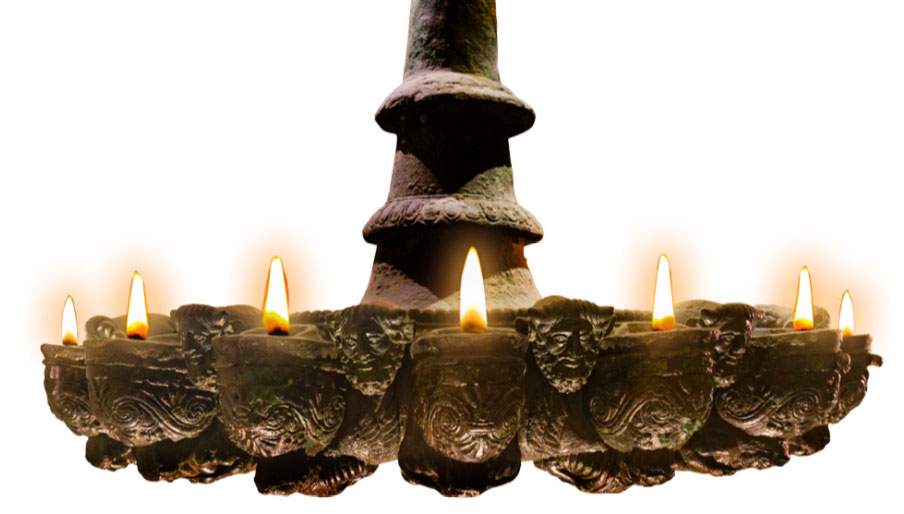Cortona hosts the first exhibition dedicated to light in the Etruscan world: from June 5 to September 12, 2021, the exhibition Luci dalle tenebre, dai lumi degli Etruschi ai bagliori di Pompei, which brings together artifacts from prestigious Italian museum venues, is on display at MAEC - Museo dell’Accademia Etrusca e della Città di Cortona.
Entirely focused on lighting techniques and related rituals in Etruscan times, the exhibition, thanks to the collaboration of major Italian universities and internationally renowned scholars, presents objects that testify to the natural lighting techniques and artificial lighting tools used by the Etruscans. From the Etruscan bronze chandelier already housed in the halls of the MAEC, a precious instrument of ancient artificial lighting, to the extraordinary loan from the Mann in Naples: a statue found in Pompeii depicting an ephebe, to which a special display is dedicated in the Hall of the World Maps. The bronze statue is about five feet tall and depicts a teenager holding a candelabra that was used to welcome distinguished guests in ancient mansions.
An entire section is devoted to lighting systems related to the Nuragic culture developed in pre-Roman Sardinia, while a rich section is reserved for some of the most prestigious achievements found in the city of Pompeii, connected to the Etruscan world by ancient ties of dependence, including a lampadophorous ephebe statue found intact in a rich dwelling in Via dell’Abbondanza.
The exhibition project intends to foster an advancement in the knowledge of Etruscan society in the international arena, but above all it aims to acquaint the general public with ways and times by which our ancestors illuminated their dwellings in an ecological and environmentally sustainable way through the use of renewable resources.
Ample space is devoted to education, with three-dimensional models and evocative effects in an immersive room using augmented reality and a copy of the interactive Etruscan chandelier that allows people to learn about some aspects of this important find in an innovative way.
"The Lights from Darkness exhibition is also a new opportunity to celebrate the link between the Etruscans and Pompeii," said Culture Councillor Francesco Attesti.
“Alongside our famous chandelier,” stressed MAEC Technical Committee Chairman Nicola Caldarone, “other artifacts will join from the most prestigious Etruscan museums, particularly from Florence, Perugia, Tarquinia, and Rome’s Villa Giulia to send a significant signal of new life and hope for the future of humanity. The transition from a cold and dark season to a radiant one was hailed already in antiquity with the evocative celebrations of the flame, we hope that this transition can take place as soon as possible, with respect to the difficult moment we are living.”
The initiative relies on the collaboration of the peripheral offices of the Ministry of Culture, particularly the Regional Directorates of Museums of the various regions to which the lending museums belong, and the territorially competent Superintendencies of Archaeology, Fine Arts and Landscape. In particular, the Regional Directorate of Tuscany and the ABAP Superintendence of the provinces of Siena, Arezzo Grosseto, which have always been linked to Cortona and the MAEC and active in promoting the various activities offered by the museum. Also worth mentioning is the relationship between the MAEC and the Accademia Etrusca with the Luigi Rovati Foundation of Milan, with which an act of agreement was recently signed: the collaboration with the Foundation for this exhibition constitutes the first opportunity for scientific contact between the two institutions.
For more info: cortonamaec.org.
 |
| In Cortona the first exhibition dedicated to the lights of the Etruscans |
Warning: the translation into English of the original Italian article was created using automatic tools. We undertake to review all articles, but we do not guarantee the total absence of inaccuracies in the translation due to the program. You can find the original by clicking on the ITA button. If you find any mistake,please contact us.